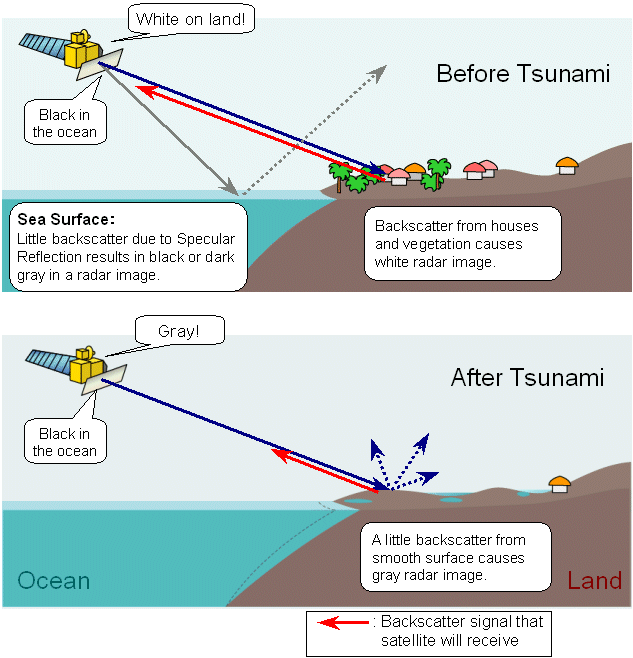Derivation of Coastal Changes using Two Radar Backscatter Intensity Images.
RADAR BACKSCATTER INTENSITY
The roughness of the surface has the greatest influence on radar backscatter. A flat sea surface without waves, for example, gives no backscatter to the satellite and is imaged as black.

COLOR ADDITIVE PROCESS
The additive process between red (R,G,B) = (100%,0%,0%) and cyan (R,G,B) = (0%,100%,100%) results in white (R,G,B) = (100%,100%,100%).
First, convert colors in radar images from gray-scale in image before the earthquake to red-scale and from gray-scale in image after the earthquake to cyan-scale.
Second, the additive process between the red-scale and the cyan-scale results in gray-scale, red-scale and cyan-scale at unchanged area, area where backscatter decreased, and area where backscatter increased.
|